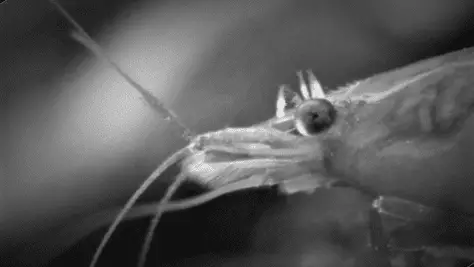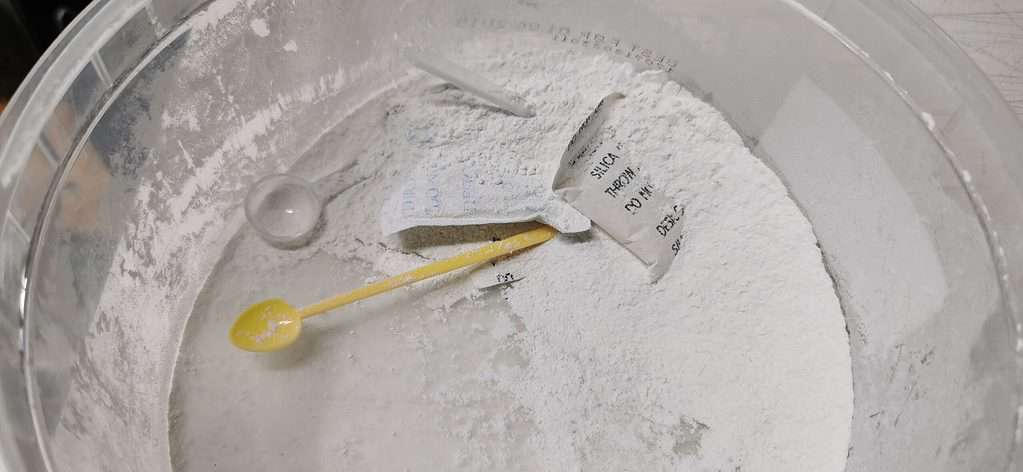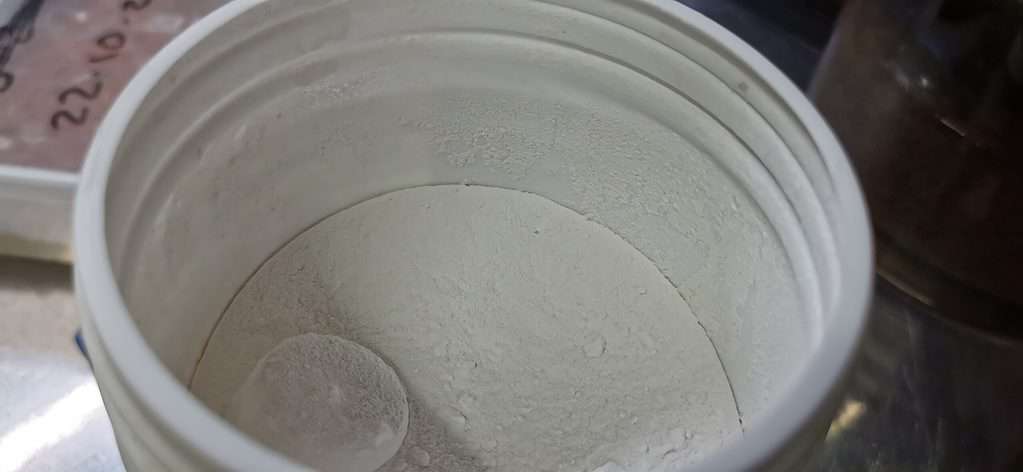Scutariella Japonica resembles flatworms and lives on and in dwarf shrimp, such as Neocaridina Davidi. They often co-exist with other types of symbionts, such as Holtodrilus truncatus. Hence, it’s important to note that many species of tiny little worms live on shrimp and in your aquariums, so don’t always presume that what you see is Scutariella Japonica.
The good news is the treatments we outline below can take care of them, so read on.
Origin and Distribution
A. Native range of Scutariella Japonica
Scutariella Japonica is a parasitic nematode that is native to China. The native range of Scutariella Japonica is considered China, where it was first discovered and is most prevalent. It is primarily found in various aquatic environments in China, including rivers, lakes, and other bodies of water where its host shrimp, Neocaridina Davidi, thrives. In its native range, Scutariella Japonica is well adapted to its host and surrounding environment and can thrive and reproduce successfully.
B. How it spread to other regions
Scutariella Japonica has spread to other areas beyond its native range in China through the transportation of its host shrimp, Neocaridina Davidi. The host shrimp is often used as bait and imported into aquariums, and Scutariella Japonica can hitch a ride on its host and spread to new locations.
One of the main factors contributing to the spread of Scutariella Japonica is the increasing popularity of Neocaridina Davidi as an aquarium shrimp. As more and more people keep this species as a pet, the likelihood of Scutariella Japonica spreading to new locations increases. Additionally, the ease of transportation and trade of aquarium shrimp has also contributed to the spread of this parasite.
In addition to the transportation of its host shrimp, Scutariella Japonica has also been able to spread due to global warming. As temperatures rise, the parasite can survive in a broader range of environments and expand beyond its native scope in China.
In summary, Scutariella Japonica has spread to other areas beyond its native range in China through the transportation of its host shrimp, Neocaridina Davidi. The increasing popularity of this species as an aquarium shrimp, the ease of transport and trade, and the effects of global warming have all contributed to the spread of this parasite
Physical Characteristics
A. Description of the appearance
In terms of its anatomy, Scutariella Japonica has a simple body structure that consists of a head, a neck, and a trunk. Two distinctive points characterize the head of the parasite, and the channel is narrow and flexible, allowing the parasite to move and attach itself to its host shrimp. The trunk of the parasite is the main body section, where its digestive and reproductive systems are located.
B. Size and Shape
Scutariella Japonica is a tiny parasitic nematode that resembles a flatworm. It is only a few millimeters in length and has a slender shape. The body of Scutariella Japonica is flat and translucent.
C. Color
It looks white but is translucent, and I imagine this changed depending on what it’s eating.
D. Physical features that distinguish it from other species
One physical feature distinguishing Scutariella Japonica from other species is its head structure, which has two distinctive points. This unique head structure sets Scutariella Japonica apart from other parasitic nematodes
Life Cycle
A. Reproduction
Scutariella Japonica lays its eggs around its host shrimp’s gills (branchial chambers), providing a secure, nutritious, and safe environment for the developing larvae. The gills of the host shrimp are an essential source of oxygen and nutrients for the parasite. They also provide a physical barrier that helps protect the developing larvae from predators and other threats.
Overall, laying eggs around the host shrimp’s gills is an essential aspect of the reproductive biology of Scutariella Japonica and helps ensure the survival and success of its offspring.
Once the larva is developed enough, it leaves the branchial chamber, climbs up the shrimp’s carapace, and heads towards the rostrum.
B. Duration of life cycle
The lifespan of Scutariella Japonica is not well documented, and there is limited information available on this topic. To my knowledge, no studies have specifically examined the lifespan of this parasitic nematode, and more research is needed to determine an accurate estimate of its lifespan.
However, the lifespan of Scutariella Japonica is likely influenced by several factors, including the availability of its host shrimp, the environmental conditions it is exposed to, and the presence of predators and other threats. These factors can vary depending on the location and habitat of the parasite, and they can impact the lifespan of Scutariella Japonica in different ways.
In conclusion, while the exact lifespan of Scutariella Japonica is not well known, it is likely influenced by a range of environmental and ecological factors.

C. Environmental factors that impact the life cycle
Environmental factors can play a significant role in the survival and success of Scutariella Japonica. Some of the critical environmental factors that can affect this parasitic nematode include:
- Water temperature: Scutariella Japonica is sensitive to changes in water temperature, and it may be more likely to survive and thrive in warm, stable conditions.
- Water quality: The quality of the water in which Scutariella Japonica lives can impact its survival and success. Factors such as pH, dissolved oxygen levels, and pollutants can influence the parasite’s health and well-being.
- Availability of host shrimp: The availability of host shrimp is a critical factor in the survival of Scutariella Japonica. The parasite depends on its host for survival, and changes in the abundance or distribution of host shrimp can impact the overall health and population of the parasite.
- Presence of predators: Scutariella Japonica is vulnerable to predation by a range of aquatic animals, including fish and crustaceans. The presence of predators in its environment can impact the survival and success of the parasite.
Overall, environmental factors such as water temperature, water quality, availability of host shrimp, and the presence of predators can all impact the survival and success of Scutariella Japonica. It is essential to consider these factors when examining the ecology and biology of this parasitic nematode.
Management and Control
Preventive measures
Preventative measures are essential in controlling the spread of Scutariella Japonica and minimizing its impact on native ecosystems. Some of the essential preventative measures that can be taken include:
- Quarantine of imported aquarium species: Scutariella Japonica is often introduced to new locations by importing aquarium species, such as neocaridina davidi. To prevent the spread of this parasite, it is essential to quarantine imported aquarium species and monitor them for signs of infection.
- Proper disposal of aquarium water and species IF YOUR SHRIMP ARE INFECTED: Aquarium water and species should not be released into the environment, as this can contribute to the spread of Scutariella Japonica. Aquarium owners should properly dispose of aquarium water and species to minimize the risk of introducing the parasite to new locations.
- Monitoring of waterways: Regular monitoring of waterways can help detect the presence of Scutariella Japonica and other invasive species, allowing for early intervention and control measures.
- Education and outreach: Education and outreach are important in raising awareness about the impact of Scutariella Japonica and preventing its spread. This can include outreach to aquarium owners, pet stores, and the general public and educational programs to increase awareness of the issue.
Chemical control methods

Genchem No Planaria
My number one way of removing Scutariella Japonica from the tank, you can also use these dosing instructions on Hydra (I will link you to a page if you want to learn more about that here)
It is made from Betel nut palm extract and is derived from the Areca catechu plant, commonly known as the betel nut palm. This plant is native to Southeast Asia and is widely cultivated for its nut, commonly chewed for its mild stimulant effects.
In the context of aquarium treatments, betel nut palm extract is sometimes used as an active ingredient in products designed to control pests or parasites. The exact mechanism of action of betel nut palm extract in these products is not well understood. Still, it is believed to have toxic effects on certain aquatic species, including planaria, hydra, and snails.
 Here is a step-by-step breakdown of MY dosing instructions for “No Planaria”:
Here is a step-by-step breakdown of MY dosing instructions for “No Planaria”:
Day 1:
- Dose 0.2 grams of “No Planaria” per 40 liters of tank water.
Day 3:
- Dose 0.2 grams of “No Planaria” per 40 liters of tank water.
Day 5:
- Dose 0.2 grams of “No Planaria” per 40 liters of tank water.
Day 7: Perform a small water change.
After two weeks:
- Add active carbon to the tank to remove any leftover medication.
It is essential to follow these instructions carefully and consider the product’s potential impact on the specific aquarium inhabitants, such as snails, and the ecosystem’s overall health before using any control method.

Aquarium Salt
Salt dipping can be a productive way of removing Scutariella Japonica, and I prefer this way over adding salt directly to the tanks themselves. To salt dip, you only need a container to hold the aquarium water and the aquarium salt itself. Let me guide you through the process.
- Collect around a liter of aquarium water in a container and add 1/2 teaspoon of aquarium salt to the water, give it a good stir, and make sure all the salt granules are dissolved.
- Catch the infected shrimp.
- Add infected shrimp to the salt water for 3-5 minutes
- remove the shrimp and place it back in the tank
- remove any resulting molts
- This is the part you won’t see in many other articles; you must repeat this process a few days later. Let me explain below.
Scutariella Japonica has an egg stage in its reproductive cycle that isn’t affected by salt dipping; this is why it has to be repeated; this is why my No Planaria dosing above is different from what you will read on the instruction on the packet itself. I recon Scutariella Japonica egg gestation stage can only be a few days at most because they are such a simple and small organism.

H2O2 Hydrogen Peroxide
Hydrogen peroxide (H2O2) is a chemical compound made up of hydrogen and oxygen. Its pure form is a colorless and slightly viscous liquid with a distinct bitter taste.
Hydrogen peroxide is commonly used as a bleach, disinfectant, and oxidizer in various household and industrial applications. When applied to living tissues, it can act as an antiseptic and can be used to clean wounds or remove dead tissue.
In aquariums, hydrogen peroxide can be used to control pests. When added to water, hydrogen peroxide breaks down into water and oxygen, disrupting the growth and survival of certain aquatic species.
It is important to note that hydrogen peroxide can harm aquatic life if misused or in excessive amounts.
For our application, we want to enhance Hydrogen Peroxides’ oxidizing power. In relative terms, it simply means we will burn the shrimp parasites with low-volume safe amounts of H202.
I formulated H2O2 dosing with shrimp over years of experimentation, but I always did it in a safe way with shrimp; I started by dosing the minuscule amounts directly into tanks and watching for the shrimp’s reaction.
During oxidation, hydrogen peroxide breaks down into water (H2O) and oxygen (O2). Plants and animals can use the oxygen that is produced during this process for breathing. The water that is made is just like the water you drink or use for bathing.
So, after the oxidation process, hydrogen peroxide becomes water and oxygen. Both are important for life and very safe in an aquarium.
Going back to my testing, so I don’t go off on too much of a tangent, I stopped upping the dose when I started seeing a reaction in the shrimp; no shrimp were ever killed while I was testing this so I know it was a very safe method of reducing parasite and lowering bacterial counts.
Ok, right on to the dosing because I am blethering too much; the dose is the tank volume in liters divided by the H2O2%. The resulting dose you get is the dose you add to the tank in milliliters. Let me give you an example: a 120-liter tank divided by 3(or whatever percentage of H2O2 you use) = 30.
30mL is the dose you add to the tank. I have made a handy calculator for you here if you cant work it out.
I have to be clear here, though, that you need to get this number correct, or there is a chance you can kill your shrimp. I would also like to say dosing H2O2 into an aquarium wasn’t my idea either. I only came up with the formula for safe dosing with shrimp.
I originally got the idea for H2O2 dosing in aquariums after reading about its use to de-lice flukes in salmon fish farms, which is now a banned practice in the country I live in because you cant dose the correct volume of H202 for a sea pen and overdosing can affect the wildlife.
Why do I prefer to treat the entire tank?
Treating aquarium parasites outside of the tank carries the risk of not effectively eliminating all of the parasites. This is because some parasites, such as hydra or planaria, have the ability to cling to objects like plants and snails and can be easily transferred from tank to tank.
Treating the entire tank ensures that all areas of the aquarium, including the water, substrate, decorations, and plants, are exposed to the treatment. This makes it more likely that all the aquarium parasites will be eliminated.
Additionally, treating the entire tank helps maintain the aquarium ecosystem’s overall health and stability. By removing parasites and reducing their impact on the inhabitants, you can help to promote a healthy and thriving aquarium environment.
In short, treating the entire tank when dealing with aquarium parasites provides a more comprehensive and practical approach to controlling and eliminating these pests. By doing so, you can help to ensure the health and well-being of your aquarium inhabitants and the overall stability of the ecosystem.
Is Scutariella Japonica dangerous to shrimp?
After days of research, I can’t find any direct evidence to suggest Scutariella Japonica are dangerous to shrimp, but that doesn’t mean they aren’t. If I had to make an educated guess based on all the facts we have talked about in this post, I would say that the fact they lay eggs on the shrimp gill setup would make them dangerous. I would imagine the eggs being attached to something does some damage.
Conclusion
it is important to be aware of Scutariella Japonica and to take preventative measures to control its spread and impact on your shrimp inhabitants. When using products to control Scutariella Japonica or other pests or parasites, it is important to research the potential impact of the products involved and to understand fully what it is you are doing because your shrimp’s life depends on it, I hope I have covered most of the basics of what you need to do to get rid of Scutariella Japonica and I know I haven’t covered all treatments. For some good reason, like fenbendazole, I can’t accurately tell you how to dose it because it comes in different strengths. I also can’t recommend products I’ve never used, so I hope that covers why my list of potential treatments is a little bit on the sparse side, but I know they all work, and that’s what counts. Thank you for reading.
FAQ
Q: What is Scutariella japonica? A: Scutariella japonica is a parasitic flatworm that can infect freshwater aquarium shrimp.
Q: What are the symptoms of Scutariella japonica infection in shrimp? A: Symptoms of Scutariella japonica infection in shrimp may include white, thread-like growths on the body, lethargy, loss of appetite, and increased susceptibility to other infections.
Q: How is Scutariella japonica transmitted? A: Scutariella japonica is transmitted through contact with infected shrimp or contaminated water.
Q: How can I prevent Scutariella japonica infection in my shrimp? A: Scutariella japonica infection can be prevented by maintaining proper water quality and hygiene in your aquarium, avoiding overstocking and overfeeding, and quarantining new shrimp before adding them to your tank.
Q: How can Scutariella japonica infection be treated? A: Scutariella japonica infection can be treated by removing infected shrimp from the tank and treating them with a suitable medication, such as no planaria.
Q: Can Scutariella japonica infect other aquatic organisms in my aquarium? A: Scutariella japonica is primarily a parasite of shrimp, but it can also infect other crustaceans such as crabs and crayfish.
Q: Can Scutariella japonica be transmitted to humans? A: There is no evidence that Scutariella japonica can be transmitted to humans.
Q: How do I prevent the spread of Scutariella japonica to other aquariums? A: To prevent the spread of Scutariella japonica to other aquariums, it is important to quarantine new shrimp before adding them to your tank, maintain proper hygiene and water quality, and avoid sharing equipment between tanks.
Q: How long does it take for Scutariella japonica to complete its life cycle? A: The life cycle of Scutariella japonica is not well understood, but it is thought to take several weeks to complete.
Q: Can Scutariella japonica be completely eradicated from an aquarium? A: Scutariella japonica can be difficult to completely eradicate from an aquarium, as the parasite can lay dormant in the environment and re-infect shrimp. Regular monitoring and treatment may be necessary to manage the infection.
